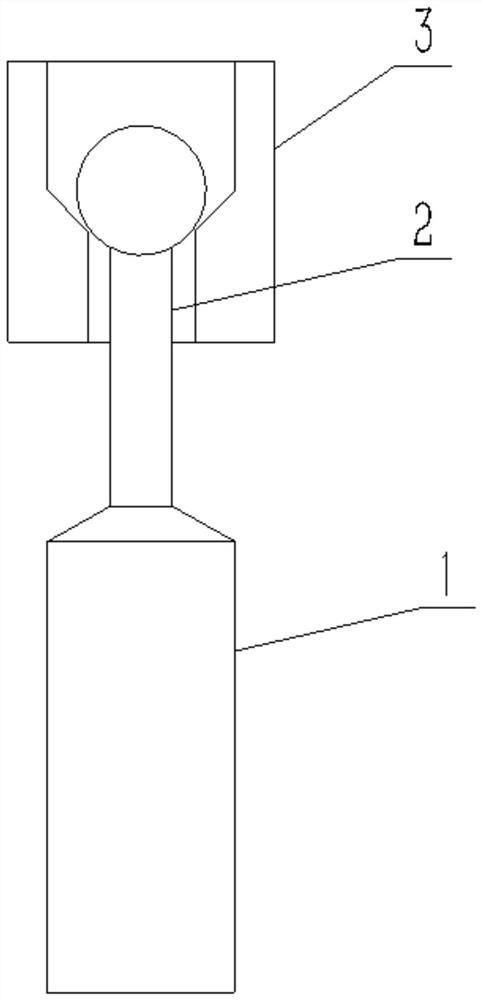Nano aluminum oxide coating process for preventing quartz glass from high-temperature deformation and adhesion
A technology of nano-alumina and quartz glass, applied in the direction of coating, etc., to achieve the effect of increasing the number of times of use, eliminating high-temperature adhesion, and reducing the frequency of replacement
- Summary
- Abstract
- Description
- Claims
- Application Information
AI Technical Summary
Problems solved by technology
Method used
Image
Examples
Embodiment 1
[0027] A nano-alumina coating process for preventing high-temperature deformation and adhesion of quartz glass, comprising the following steps:
[0028] Step 1: Select high-purity nano-alumina, nano-zirconia, and nano-silicon carbide, and mix them into powder in proportion;
[0029] Step 2: Through the high-temperature sintering process, the powder is uniformly sintered on the surface of the quartz glass sphere to form a coating. The attachment can be effectively combined with the quartz glass to reach the nano-level level, which greatly improves the strength and toughness of the coating, thereby improving the surface resistance of the quartz glass. Temperature, glass strength and toughness;
[0030] Step 3: Control the thickness of the coating at 18um, and then bake it with a flame to make the bonding force of the coating reach 30Mpa and increase the wear resistance of the attached surface;
[0031] Step 4: Finally, stress-relieving the quartz glass.
[0032] Specifically, ...
Embodiment 2
[0035] A nano-alumina coating process for preventing high-temperature deformation and adhesion of quartz glass, comprising the following steps:
[0036] Step 1: Select high-purity nano-alumina, nano-zirconia, and nano-silicon carbide, and mix them into powder in proportion;
[0037] Step 2: Through the high-temperature sintering process, the powder is uniformly sintered on the surface of the quartz glass sphere to form a coating. The attachment can be effectively combined with the quartz glass to reach the nano-level level, which greatly improves the strength and toughness of the coating, thereby improving the surface resistance of the quartz glass. Temperature, glass strength and toughness;
[0038] Step 3: Control the thickness of the coating at 19um, and then bake it with a flame to make the bonding force of the coating reach 40Mpa and increase the wear resistance of the attached surface;
[0039] Step 4: Finally, stress-relieving the quartz glass.
[0040] Specifically, ...
Embodiment 3
[0043] A nano-alumina coating process for preventing high-temperature deformation and adhesion of quartz glass, comprising the following steps:
[0044] Step 1: Select high-purity nano-alumina, nano-zirconia, and nano-silicon carbide, and mix them into powder in proportion;
[0045] Step 2: Through the high-temperature sintering process, the powder is uniformly sintered on the surface of the quartz glass sphere to form a coating. The attachment can be effectively combined with the quartz glass to reach the nano-level level, which greatly improves the strength and toughness of the coating, thereby improving the surface resistance of the quartz glass. Temperature, glass strength and toughness;
[0046] Step 3: Control the thickness of the coating at 20um, and then bake it with a flame to make the bonding force of the coating reach 50Mpa and increase the wear resistance of the attached surface;
[0047] Step 4: Finally, stress-relieving the quartz glass.
[0048] Specifically, ...
PUM
| Property | Measurement | Unit |
|---|---|---|
| melting point | aaaaa | aaaaa |
| softening point | aaaaa | aaaaa |
Abstract
Description
Claims
Application Information
 Login to View More
Login to View More - R&D
- Intellectual Property
- Life Sciences
- Materials
- Tech Scout
- Unparalleled Data Quality
- Higher Quality Content
- 60% Fewer Hallucinations
Browse by: Latest US Patents, China's latest patents, Technical Efficacy Thesaurus, Application Domain, Technology Topic, Popular Technical Reports.
© 2025 PatSnap. All rights reserved.Legal|Privacy policy|Modern Slavery Act Transparency Statement|Sitemap|About US| Contact US: help@patsnap.com

